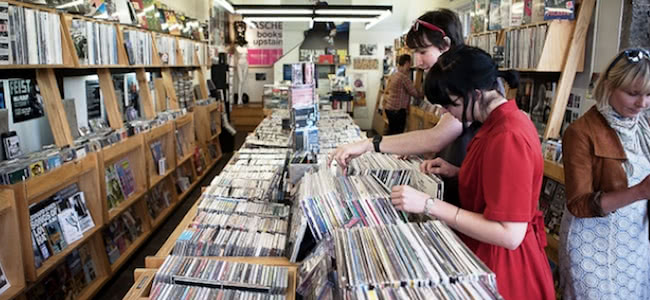With the contemporary consumer being examined under the microscope, new industry statistics have shed light on the behaviours of this particular sub-species of human who lurk in the aisles of record stores and the various music lined spaces of the web.
According to the recently released Neilsen report, “The U.S. Entertainment Consumer Report: State of the Media”, a third of the American population constitute 70% of entertainment spending. This group of ‘high spenders’ consisting mostly of females compared to males, with an average US$ 66,000 household income per annum, reports Billboard.
Certain stereotypes made about different types of music and entertainment consumers have been reinforced, with a few anomalies in behaviours highlighted in the study.
Apparently you are more likely to find a music buyer of 35 and over buying CDs, a creature of habit and tradition. While savvy buyers between the ages of 25 and 34 most likely to buy music digitally.
Going against the grain, Gen Y consumers between the age of 18 to 24 actually share an ambivalence towards the divide between digital and physical form. The younger sub-strata being only 2% less likely than the average American adult to buy CDs. These findings seem to support the idea that the general trend in CD sales are proving to plateau rather than drastically decline, providing hope that a younger generation could possibly revitalise this physical form. Going against the grain, Gen Y consumers between the age of 18 to 24 actually share an ambivalence towards the divide between digital and physical form.
The Nielsen study also depicts most consumers as social media voyeurs, contrasting greatly with the activity exhibited when spending money. According to the study over half the consumers on Facebook and Twitter read posts by artists, however only 14% will retweet and 15% will share posts via their own pages.
Also, the expanding landscape of online music streaming, one which has been systemically growing over the past few years, has officially become the new-founded habitat for many consumers, with 90% of ‘high spenders’ using resources such as Spotify.
Interestingly enough the consumerist habits of ‘high spenders’ in the American market feeds to the age-old 80/20 business principle. That is, where the consumer minority ironically constitutes most of the consumer productivity being made.
In numerical terms, according to the study, these high spender use much of their average US$ 66,000 income on music, four out of every five dollars in fact. They also account for 79% of all video-on-demand spending, 76% of all video game spending, and 70% of spending on satellite radio and reading material such as books, magazines or newspapers. Apparently you are more likely to find a music buyer of 35 and over buying CDs, a creature of habit and tradition.
That being said, it is the mid and lower spending buyers, the two sub groups that make up the other two thirds of the market, who efficiently consume music.
The less consumer-active majority spending an average 7.8 to 8.9 hours listening to music per week, compared to high spenders who dedicate 5.9 hours of their time to listening to the huge 78% majority of the music bought.
While the high spenders bracket has more buying females than males, these lower spending groups, earning between US$ 51,000 and US$ 52,000 per year, can be characterised as being more gender ratio-equivalent.
By contrast, on the other side of the Atlantic, a drive for vinyl seems to be a defining characteristic for those between the ages of 18-24 in the UK. According to a UK study conducted in the last month 14% of this younger stratum bought records, wheras only a meagre 9% of of 25-34 year olds and 5% of 35-44 year olds could say to have done the same.
The study also revealed that those who bought vinyl also purchased music in other forms, with 52% buying CDs, 31% mp3 downloads, 36% special editions or box sets and surprisingly 19% buying music on cassette tapes, perhaps suggesting another rise in nostalgic formats (especially after Sony killed off its Walkman lines and MiniDisc players).

































